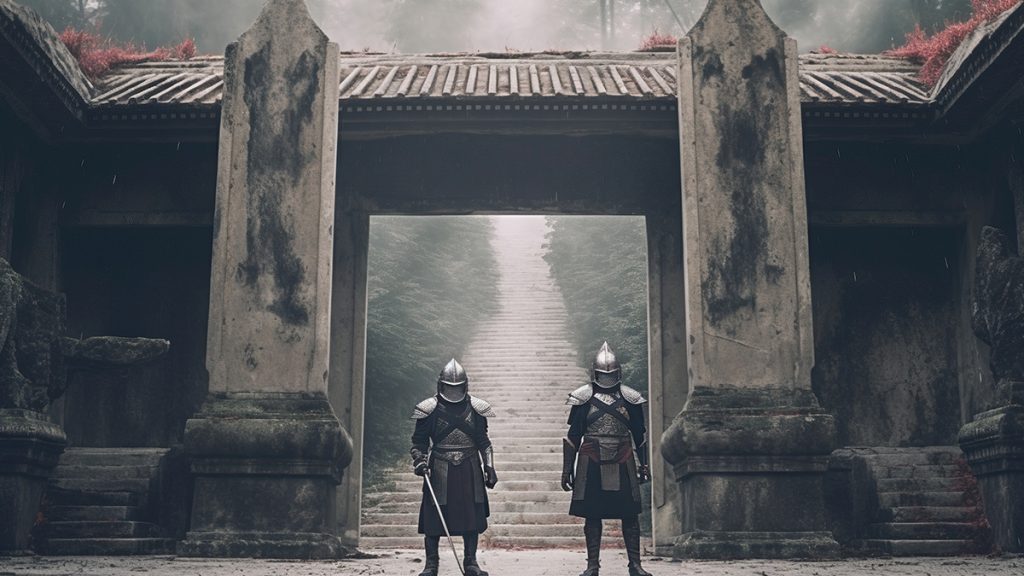The Arcadians were a civilization deeply connected to spirituality and mysticism, and their reverence for the natural forces governing their existence was inherent. Central to their spirituality was the Harvest Goddess, Tays, who was believed to be the divine entity responsible for the fertility of the soil, the growth of crops, and the prosperity of the harvest. This article delves into the socio-cultural aspects surrounding the worship of Tays, the establishment of her temple, the socio-political shifts amid the growth of the Great Empire, the creation of the Taysian Guard, and the legacy of the temple across generations.
In early Arcadian society, agrarian life and worship of Tays were inextricably linked. The community, primarily farmers, saw the goddess Tays as their divine benefactor, responsible for their sustenance. As the population expanded, they built shrines to Tays amidst fields and orchards, integrating their gratitude and prayers into their daily lives. These sites soon became communal hubs, hosting harvest festivals where the populace gathered to celebrate their bounty and express their thankfulness.
Tays was commonly invoked to bless the land of farmers prior to any ploughing or farming activities. Whenever their fields were unproductive or faced issues such as pest invasions, drought, or famine, farmers would seek her divine intervention. Particularly in instances of drought, Tays would collaborate with Horis, the God of Rain, to ensure the necessary rainfall. Within the temple of Tays, priests and priestesses tended to the goddess and her worshippers. They offered sacrifices of the finest fruits and grains and performed rituals to invoke the goddess’s blessings. The temple turned into a beacon of spiritual energy, drawing people from afar to bask in the amplified blessings of Tays. Notably, the land encircling the temple was renowned for its extraordinary harvests, affirming the residents’ faith in the goddess.
However, as the Great Empire gained power and influence, the societal landscape began to shift. The old ways gave way to new traditions and beliefs, transforming the religious fabric of society. The enduring influence of Tays, nevertheless, held strong. Interestingly, her worship saw acceptance among the new ruling classes, a testament to her relevance and prominence in Arcadian culture.
However, the temple’s growth and influence also attracted less virtuous elements of society. Motivated by greed, some sought to pilfer the offerings and riches within the temple. Despite the temple’s defenses, a few managed to rob it, causing anger and sorrow among the devout worshippers.
As a countermeasure, the temple authorities established the Taysian Guard, a special order of warriors. These guards were meticulously trained to protect the temple and its worshippers, serving as a deterrent to potential thieves. The priests and priestesses guided the Taysian Guard’s growth, turning them into symbols of the temple’s strength and safeguarding.
Examining the establishment and functioning of the Taysian Guard offers fascinating insights into how Arcadian society dealt with this surge in crime. The Guard served as the temple’s defense force, ensuring the security of the temple, its wealth, and its worshippers. The recruitment process was meticulous, emphasizing both physical prowess and spiritual affinity. Candidates were usually selected from among the local populace, ensuring that they shared the community’s reverence for Tays. Rigorous trials tested their strength, agility, endurance, and character. Beyond their martial capabilities, a deep-seated devotion to Tays and a commitment to the temple’s defense were essential criteria for selection.
Upon their induction, the Taysian Guard underwent intensive training, equipping them with the skills to defend the temple effectively. Further analysis concluded that most of these protectors were recruited from the Great Encampment, a military camp that offered the best training to soldiers from all over the Great Empire.
It is worth noting that the rewards bestowed upon the Taysian Guard extended beyond material gain. While they did receive sustenance and shelter from the temple, their true reward lay in their spiritual fulfillment. They believed that their service to the temple placed them under the direct blessing of Tays, ensuring their own prosperity and the prosperity of their families. This spiritual reward played a crucial role in motivating the Taysian Guard, encouraging their unwavering dedication to their duty.
Over time, the Taysian Guard, often referred to as Taysoria, emerged as revered figures in Arcadian society. Their commitment to protecting the temple, its riches, and its worshippers evolved into legendary tales that inspired generations. They served as reminders of Tays’s divine power and protection. As the temple continued to flourish, its influence permeated throughout the land, leaving an indelible imprint on the agricultural landscape of Arcadia.
Read More: The Great Empire’s Military Encampment



